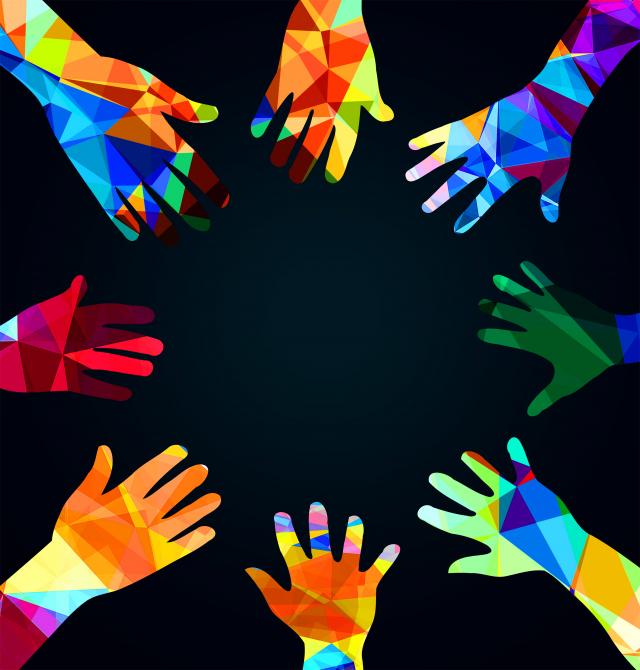A recent article in the Harvard Business Review titled Strengths Based Coaching Can Actually Weaken You was…

Breaking Through Diversity Barriers in Business
Workplace diversity is a particularly relevant topic in business today. Although there are multiple benefits a diversified workforce brings to a company, how these initiatives are actually achieved can be elusive. Recently, I had the opportunity to sit down with a man who knows a bit about diversity, Dr. Mitchell Sherman. After a thought-provoking discussion on this topic, he agreed to share his perspectives as a guest blogger on my website.
Breaking Through Diversity Barriers in Business
By Dr. Mitchell Sherman
Racial, religious and ethnic diversity are issues I have dealt with since I was an elementary school kid growing up in the ethnically complex and diverse borough of Brooklyn. Diversity was always there as a state of nature rather than something new and different. It just was there and had always been there and you dealt with it. I grew up in Jewish neighborhood, two blocks from the Italian neighborhood where we would go to Michaels for pizza and talk about our classes while sitting comfortably and at ease amongst the rough cigarette smoking Italian kids. Going to Junior High we walked past Holy Cross Catholic School and wondered about the awful looking, and as we were told with disbelief, the required school uniforms. I rarely saw a black person in the neighborhood but we often drove through Bedford-Stuyvesant to get downtown for shopping. While there was always a subtle sense of the unusual when my parents talked about black people, we also loved and rooted for Jackie Robinson. Willie Mays was always my hero.
This is not to say diversity was not an issue for many people. I can remember my parents, who were very liberal for the times, seeing a mixed race couple walking near the subway. This was considered an abomination and I could feel in the disdain from parents that there was something strange about this couple. Fortunately for my own development, I also knew how awful this couple felt walking around this beautiful city while everyone stared at them. Then there was the time that the kids from Holy Cross chased me home and wanted to beat me up. I had never met any of the three big boys who chased me and could not make any sense of what I had done wrong. They were yelling “god killer” at me as they raised their fists. I was too young to even comprehend what they were talking about. I was taught god was all powerful and here they were blaming me because they thought I had killed god. This did not make any sense.
So while I understood that we were all different, I also figured out that there were many truly unusual barriers to friendship between groups; that a lot of hate and misunderstanding were somehow built in.
My career began as many do in business and Economics. I still love Economics more than anything because of its pure rational and theoretical nature. But as my career progressed I found myself moving into management and lately into the arena of diversity management. While diversity may be an old issue for me, it is certainly a new issue for many organizations and people. In fact it is very likely shocking for someone who grew up on the farm in the outstate region, to move to the big city and find people from so many cultures in the workplace.
This cultural diversity is a very new thing. I love looking at old black and white photos of students attending the university where I teach. Not so long ago, these photos proclaim, students came to class extremely well dressed. In this modern era I have to inform my students to take off their baseball caps in class but in that old black and white era, no one would think of being so disrespectful as to wear a hat in class. The men all are wearing suits or sports jackets; white shirts and ties. And the women, what are the women wearing? Well there are no women in these photos. Women, in spite of outperforming men academically in high school, were absent from the college classroom. I should have mentioned that all the men in the photo were white and probably all Christian. There were not any black men or Asians of any kind in these photos. The world the lens captures is very homogeneous; white, male and Christian.
Today’s world is, of course, Kodachrome. The black and white view of the world has been left behind by a world brimming with diversity in a span of just a few years. There were times, not long ago, that being gay was considered a mental disorder and a perversion; when interracial marriage was illegal (See Loving v. Virginia); when Harvard refused to grant PH.D’s to women and black children did not go to decent schools.
It is essential that we understand that the remarkable changes that have occurred so quickly were predominantly the result of legal/political action and not due to changes in social, personal or interpersonal relationships. While the legal environment has changed there has not been a parallel change in attitudes. Many of the legal and political activists that helped to bring about these positive changes naively thought that when the legal hammer fell on the discriminatory black and white world; all would be well.
Naïve might be an understatement. Nothing in the world of inter-group attitudes changes easily. It truly is unreasonable to think that legal changes in the workplace would automatically bring with them parallel change in attitudes that have been beaten into our unconscious minds for generations. The social and interpersonal world tends to hold onto its old habits and many of the beliefs that were predominant in the old world remain with us today. That is not to say that no change has occurred in our cultural attitudes. It is certainly a more open world today. I know we all want to live in a world without prejudice and bias but it’s not rational to think that ingrained cultural belief can change in one generation.
Today we are faced with what might be an even bigger challenge then changing the old legal and discriminatory black and white world. Today we need to figure out how this new legally determined world can mesh with the social world of old beliefs and attitudes that are so difficult to change. When we talk about breaking down barriers to communicating across diverse groups it is essential to understand that this is an incredibly new endeavor which has only just begun.
Attempts made to change attitudes in the workplace usually focus on teaching people good behavior. I have been involved in several of these types of workshops. Consultants and legal experts might provide lectures on the do’s and don’ts of diversity; teaching employees what is now expected of them and what is considered politically correct. These approaches actually stiffen and entrench employees existing attitudes. People naturally chafe under these instructions.
This is not surprising. No one likes to be told how they must behave; no one wants to believe that they may have been some kind of bigot in the past or that without appropriate training they wouldn’t know how to behave. These kinds of approaches simply do not work. They do not bring the kind of change that business really needs because they do not provide a motivation for real internal change. For real change to occur, employees need to change naturally as a consequence of their own internal needs and desires.
Author Biography: Dr. Mitchell Sherman is a Professor of Psychology at University of Wisconsin-Stout and designer of the Workplace Diversity certificate at the University. He shared plans with me to write a book on this topic so keep your eyes open for his continued work in this area. Dr. Sherman can be contacted at shermanm



This Post Has 0 Comments